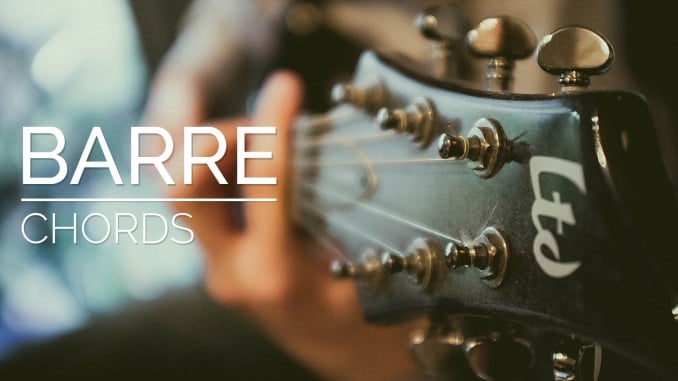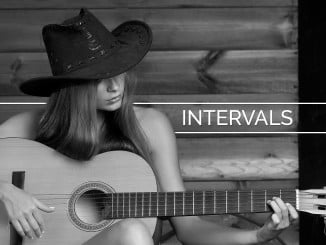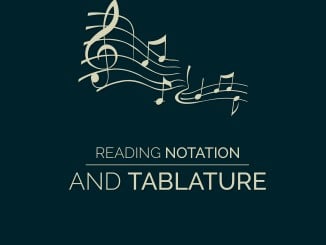
First let’s define Bar Chords. Bar Chords are chords that have your index finger holding down more than one string and not playing with any open strings. Confused? Well let me clarify things. I’ll show you by using a few diagrams.


This is F major in bar chord form. To play this chord you need to bar the first fret. In other words, stretch your index finger across the fretboard so that it presses every string like in the picture on the right.

This is D# major in bar chord form. For this one, you can bar the 1st fret and you can bar the 3rd fret. You would bar the 3rd fret with your ring finger. Notice that the Low E string is not played, so there are no open strings played.

This is C# major in bar chord form. Notice that even though you do not “bar” the entire 1st fret, you still leave no open strings and you are still stretching across more than one string.
The great thing about these chords is that they are completely movable. So if you move the chord down a fret then you know that the chord is raised a half step. (example: C would be raised to C#). Let’s look at this more in depth.
Major Bar Chords (6th String Root)

Minor Bar Chords (6th String Root)

Notice that the only difference between the Major and Minor chords is the note on the G string. Now look at the note on the Low E string. This note names the chord. Look at the fretboard below to see.

Now look at this Tablature:
Major Bar Chords (5th String Root)

Minor Bar Chords (5th String Root)

Notice that the only difference between the Major and Minor chords in this form is the note that lies on the B string. You should also notice that the note on the A string tells you what chord it is. Now you should see that because the top note of every chord in these forms tells you the name of the chord you should see that all of the bar chords are movable. All you have to do is slide the pattern down, and name it with the top note. There are other forms like the C# and D# that I gave you up top, but there are too many for me to list and not all of the other ones have their top note as the root note (the note that names the chord).





Leave a Reply